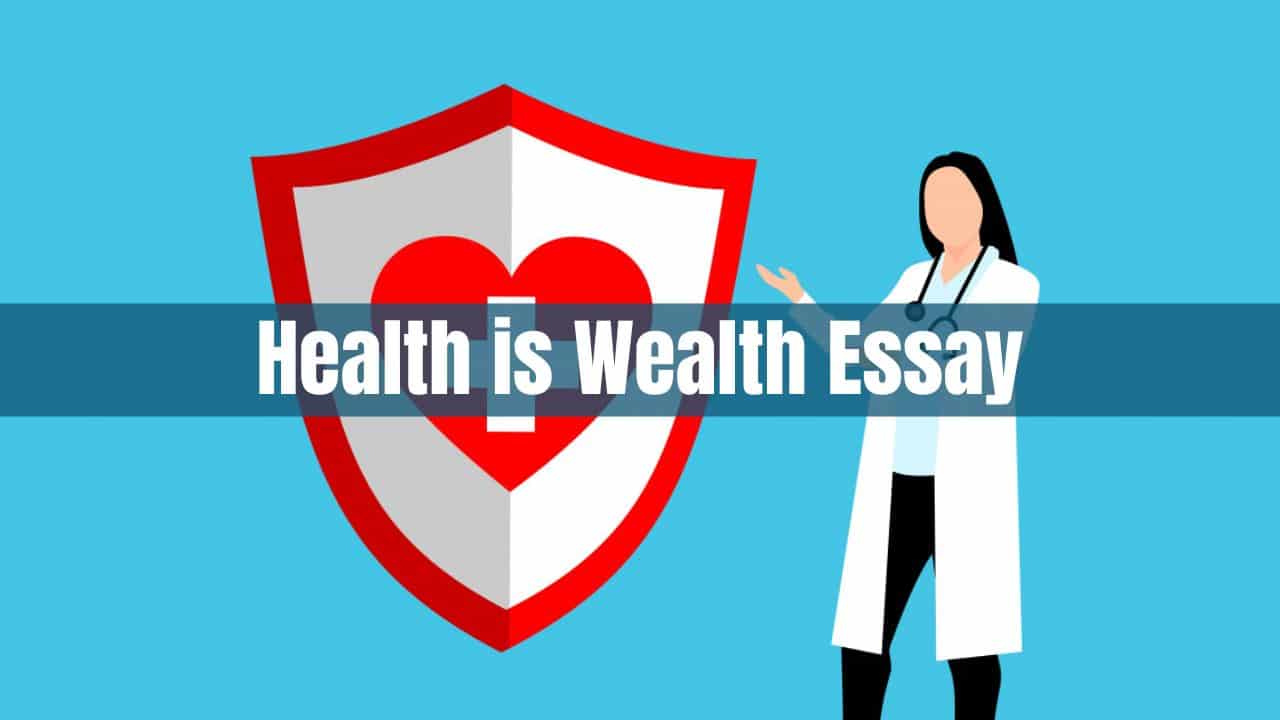Enjoying nature, breathing fresh air, feeling the aesthetic values, refreshing the mind, meditating in the slow breeze, everyone wants these in their life. Unfortunately, with development, innovations, technology, ease of living, we are moving towards the extinction of life with increasing pollution. Air pollution is one of the major pollutions which directly affects our lives. According to WHO every year 7 mn people die worldwide due to inhaling polluted air.
In this air pollution essay, we will discuss the major points related to Air Pollution.
- What is Air Pollution
- Causes and Sources of Air Pollution
- Types of Air Pollution
- Effects of Air Pollution
- Diseases Caused by Air Pollution
- Control Air Pollution
What is Air Pollution?
Air Pollution refers to the mixture of solid particles and gases in the air like car emissions, chemicals from factories, dust, pollen, fungal spores, suspended particles, ozone, smoke. It refers to the release of pollutants into the air which is detrimental to human health and the whole earth. It is a mixture of hazardous substances, both man-made as well as natural.

Causes and Sources of Air Pollution
There are various different causes of air pollution which can be natural and human-made. The major cause of any pollution is excessive human intervention with nature, overexploitation of the natural resources, deforestation for development, and shelter.
Most air pollution is caused by energy use and its production. Emissions from cars, planes, gasoline, industries, factories are the major causes. Ozone released from the refrigerator, various industries like steel, iron industry are the major cause of smog. Burning fossil fuels releases various gases like CO, NOx, SOx, smoke, soot, and particulate matter are the major pollutants. These are anthropogenic (man-made)activities that cause air pollution.
Natural processes like volcano eruptions, forest fires release many harmful gases into the atmosphere. Another natural factor is anemophily( air pollination), pollens released during a particular season and they can cause allergies is also a kind of air Pollution.
Various Types of Pollutants and Their Sources
Ozone
It’s an atmospheric gas and is called smog at the ground level. This is a major pollutant in the lower troposphere and not in the upper atmosphere ( stratosphere). The stratosphere ozone layer protects from harmful ultraviolet rays by reflecting them. But at the ground level, the ozone is emitted from the power plants, boilers, refineries, and other sources chemically react in the presence of sunlight.
Noxious gases
It includes gases like carbon dioxide, carbon monoxide, nitrogen oxides(NOx) and sulfur oxides (SOx) which are mostly released as by-products of industrial processes and emitted from motor vehicles, electricity generation processes, fossil fuels combustion.
Particulate Matter(PM)
It consists of sulfates, nitrates, carbonates, or minerals, dust. Fine particulate matter (FPM) is PM 2.5 which is smaller than the diameter of a hair. It is also composed of PM 10. These fine particles especially PM 2.5 are not filtered by the nasal tract and cause harmful effects in the lungs and respiratory tracts.
Sources of primary particulate matter are fires, smokestacks, construction sites, unpaved roads. Sources of secondary particulate matter are reactions between chemicals in the chemical industries, and automobile exhaust.
Volatile Organic Compounds
Those Compounds vapourize at room temperature and contain carbon. These are released from paints, glue, cleaning supplies, pesticides, furnishings, natural gas, gasoline. Volatile organic compounds along with polycyclic aromatic hydrocarbons (PAH ) are the major carcinogens released from steel, iron manufacturing industries, combustion, pharmaceutical industries.
Lead
Lead is a particulate released from oil refineries, smelting, combustion. Combustion of gasoline added with tetraethyl lead is a major source of lead particulates. It causes seizures, vomiting, and learning disabilities called lead poisoning.
Pollen and Mold Spores
Mould and allergens from trees, weeds, and grass are also carried in the air, are exacerbated by climate change, and can be hazardous to health.
Air Toxics
Hundreds of substances considered hazardous when mixed with air in trace amounts. These pollutants are called air toxics. Most air toxics are organic chemicals, volatile organic compounds, other organic compounds containing chlorine, sulfur, nitrogen. They are widely used as fuels like propane, in the plastic industry, as paint thinners. Many VOCs are contributing to greenhouse gases and causing global warming. Other air toxins are metal or metal compounds like arsenic, cadmium, mercury.
The major hazardous air Pollutants needed to be regulated primarily are asbestos, silicon, arsenic, benzene, vinyl chloride, beryllium coke, cyanide compounds, and nickel compounds. These are mostly released from industrial exhausts, burning fossil fuels, pharmaceutical production, metal processing units, radioactive wastes, volcano eruptions, plastic industries, etc.
Also Read: Best Women Empowerment Essay

Types of Air Pollution
Air Pollution is divided on the basis of outdoor and indoor activities affect the atmosphere are indoor pollution and outdoor pollution.
Outdoor Pollution
The pollution which occurs outside the houses, buildings and closed space is outdoor Pollution. The causes discussed above were about outdoor Pollution. Mostly industrial activities and their wastes in the form of gases, smoke and soot ger mixed with air outside to industries and factories and houses. It is very harmful to the whole planet.
Indoor pollution
Occurs inside the houses, buildings, industries, and factories which is more harmful than outdoor activities as there is no exhaust to escape from indoor pollution. People mostly spend their time indoors so they are more prone to health risks. The problems increase as there is a very low rate of exchange of air which causes the accumulation of contaminants.
It includes various pollutants like smoke from the stove, cooking, kerosene space heaters, air filters, volatile organic compounds from household paints, cleaning agents, pesticides, mosquito repellents, etc. Bacteria, viruses, moulds, animal dander, pollen dust are biological contaminants that can cause problems. Tobacco smoke spread from smoking is the most important pollutant indoors causes problems of passive smoking.
Effects of Air Pollution
On Humans
People experience a wide range of health effects from being exposed to air pollution. These can be short term effects as well as long term effects.
Short-term effects are temporary including illnesses like pneumonia and bronchitis. They can be nausea, irritation in the eyes, nose, skin, headaches, dizziness. Bad smells from sewers, factories are less serious but still unpleasant.
Long term effects are very serious, can cause respiratory diseases, cardiovascular diseases, diabetes mellitus risks increases, cancer risks, skin disorders, occupational respiratory disorders, and neurological disorders. These can be fatal and ultimately lead to death.
Diseases Caused by Air Pollution
Respiratory diseases include emphysema due to cigarette smoking, chronic obstructive pulmonary diseases (COPD), chronic bronchitis, asthma. These diseases cause serious problems in lung development and breathing problems. Asthma is becoming common these days in very high pollution areas, people living nearby high traffic zones mostly suffer from these problems.
Cardiovascular Diseases
Fine particles impair blood vessel functions, speeding up calcification in the arteries. Air Pollution increases the chances of heart attacks, blood pressure problems as decreases the high-density lipoprotein content in the blood called good cholesterol. In women, it leads to a rise in hemorrhagic strokes. In pregnant women increased risks of hypertensive disorders lead to birth with low body weight, premature births, less developed brain in a foetus.
Cancer
A large study of women concluded higher rates of breast cancer found living near major roadways. Occupational exposure to benzene, methylene chloride, aerosol products is associated with a higher risk of non-Hodgkin’s lymphoma, leukaemia, breast cancer. Major cancer related to Air Pollution is lung cancer.
Other occupational Disorders like asbestosis, silicosis, arsenicosis, and mercuricosis occur due to specific air contaminants released in various industries. Nearly 2.5 million people die worldwide each year from the effects of outdoor or indoor air pollution.
Effects on the Environment
Like people, animals, and plants, entire ecosystems can suffer effects from air pollution. Haze, like smog, is a visible type of air pollution that obscures shapes and colours. Hazy air pollution can even muffle sounds. It occurs due to ozone and smoke.
Acid Rain
Sulfur dioxide and nitrogen oxide particles in the air can create acid rain when they mix with water and oxygen in the atmosphere. When acid rain falls to Earth, it damages plants by changing soil composition; degrades water quality in rivers, lakes, and streams; damages crops; and can cause buildings and monuments to decay.
Like humans, animals can suffer health effects from exposure to air pollution. Birth defects, diseases, and lower reproductive rates have all been attributed to air pollution.
Global warming
It refers to rising air and ocean temperatures around the world. This temperature rise is at least partially caused by an increase in the number of greenhouse gases in the atmosphere. Greenhouse gases trap heat energy in the Earth’s atmosphere.
These gases, collectively called greenhouse gases, include carbon dioxide, organic chemicals called chlorofluorocarbons (CFCs), methane, nitrous oxide, ozone, and many others. Carbon dioxide, although not the most potent of the greenhouse gases, is the most important because of the huge volumes emitted into the air by the combustion of fossil fuels (e.g., gasoline, oil, coal).
Global warming is a major problem. It’s estimated that due to air pollution the average earth’s temperature is going to rise 4 degrees Celsius till the end of the 21st century. Such a warming trend might cause the melting of the polar ice caps, rising sea level, and flooding of the coastal areas of the world.
Changes in precipitation patterns caused by global warming might have adverse effects on agriculture and forest ecosystems, and higher temperatures and humidity might increase the incidence of disease in humans and animals in some parts of the world.
Ozone Depletion
Another global problem caused by air pollution is ozone depletion in the stratosphere. Ozone plays a significant role in blocking ultraviolet radiation from the Sun before it reaches the ground. Exposure to UV radiation has been linked to skin cancer and other health problems. In 1985 it was discovered that a large “ozone hole,” an ozone-depleted region, is present every year between August and November over the continent of Antarctica. The size of this hole is increased by the presence in the atmosphere of chlorofluorocarbons (CFCs).
With the rising temperature of the earth, the chances of forest fires also increase and forest fires again contribute to global warming. Recently Amazon forest fires, Australian Forest fires, California Forest Fires lead to lots of habitat loss and wildlife destruction and accumulation of greenhouse gases, and global warming. This Air Pollution essay is basically a global warming essay because both are linked to each other.
Accidental Release of Toxic Gases
In the Bhopal disaster of 1984, an accidental release of methyl isocyanate at a Union Carbide pesticide factory in Bhopal, Madhya Pradesh state, India, immediately killed at least 3,000 people, eventually caused the deaths of an estimated 15,000 to 25,000 people over the following quarter-century, and injured hundreds of thousands more. The risk of accidental release of very hazardous substances into the air is generally higher for people living in industrialized urban areas.
Control of Air Pollution
We can control air pollution by working as a team. It can only be possible if all the countries work together as a whole. All should follow the agreements and protocols which were signed by the different countries regarding reducing air pollution. Such protocols are like the Montreal Protocol, the Paris Agreement, the Kyoto Protocol, etc.
On an individual level also we can contribute to reducing air pollution.
- Carpool- Use a single car if two or more people are going towards the same destination. Same as carpool we can use bikes and other vehicles.
- Public Transport- Use of public transport should be preferable till emergency or necessary use of private vehicles are there.
- Plantation- Trees and plants should be planted more and more for the absorption of harmful gases.
- Switch the engine off at the traffic lights so the carbon emissions can decrease up to significant levels.
- Buying fewer things that are manufactured using fossil fuels.
- Turning off lights and appliances when they are not in use.
- Indoor Pollution can be reduced by using indoor plants and using exhaust fans for escaping smoke and harmful gases.
Reducing Vehicular Pollution
- Use of Catalytic Converters-
Catalytic converters contain a catalyst that speeds up chemical reactions and breaks down nitrous oxides, carbon monoxide, and VOCs. Catalytic converters only work when they are hot, so a lot of exhaust escapes as the car is warming up.
- Making a vehicle more fuel-efficient. Lighter more streamlined vehicles need less energy. Hybrid vehicles have an electric motor and a rechargeable battery.
- Development of various vehicles to reduce sulfur and nitrogen oxides in the air like Bharat Stage VI vehicles.
Reduction of Industrial Air Pollution
Pollutants are removed from the exhaust streams of power plants and industrial plants before they enter the atmosphere by using scrubbers and various other modern techniques. Particulates can be filtered out, and sulfur and nitric oxides can be broken down by catalysts.
Reducing Ozone Depletion
The Montreal Protocol proposed controls the consumption of 96 chemicals that damage the ozone layer. CFCs have mostly phased out since 1995 but still many hazardous substances are still released in air damaged ozone layers.
Reducing Greenhouse Gases
International agreements like the Kyoto Protocol and the United Nations Conference on Climate Change are participating in recommending the use of clean fuel and alternative energy sources than fossil fuels which lead to less production of greenhouse gases. Target is considered for not increasing the temperature of the earth more than 1.5 degrees Celsius but the present situation leads to a 4-degree rise in global temperature and extreme climate changes.
Conclusion
In this air pollution essay, we discussed so many major points related to air pollution. Clean air is everyone’s right. But it is also everyone’s duty to work towards reducing air pollution and contributing to clean air. We should adopt the lifestyle of living a simple life and save our planet earth for future generations.







Leave a Comment